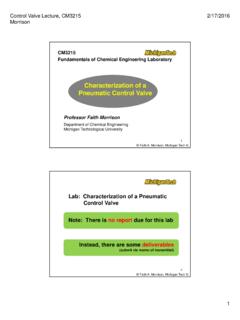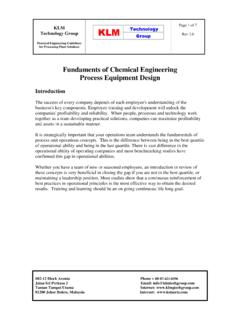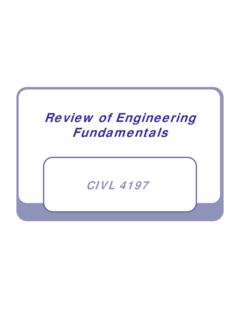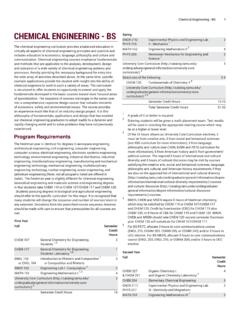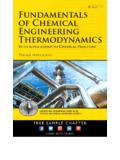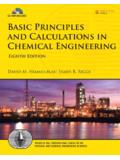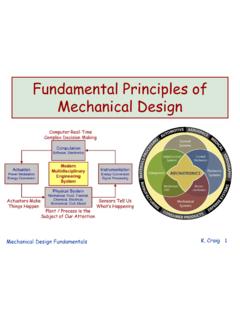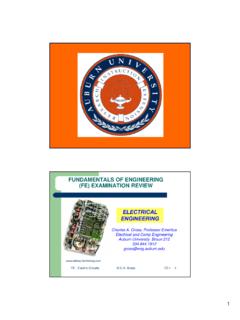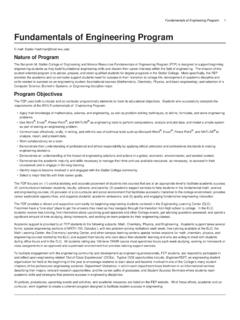Transcription of Fundamentals of Engineering (FE) Examination
1 1 NATIONAL COUNCIL OF EXAMINERS FOR Engineering AND SURVEYING Fundamentals of Engineering (FE) Examination Effective October 2005 The FE Examination is an 8-hour supplied-reference Examination : 120 questions in the 4-hour morning session and 60 questions in the 4-hour afternoon session. The afternoon session is administered in the following seven modules chemical , Civil, Electrical, Environmental, Industrial, Mechanical, and Other/General Engineering . Examinees work all questions in the morning session and all questions in the afternoon module they have chosen. MORNING SESSION (120 questions in 12 topic areas) Topic Area Approximate Percentage of Test Content I. Mathematics 15% A.
2 Analytic geometry B. Integral calculus C. Matrix operations D. Roots of equations E. Vector analysis F. Differential equations G. Differential calculus II. Engineering Probability and Statistics 7% A. Measures of central tendencies and dispersions ( , mean, mode, standard deviation) B. Probability distributions ( , discrete, continuous, normal, binomial) C. Conditional probabilities D. Estimation ( , point, confidence intervals) for a single mean E. Regression and curve fitting F. Expected value (weighted average) in decision-making G. Hypothesis testing III. Chemistry 9% A. Nomenclature B. Oxidation and reduction C. Periodic table D.
3 States of matter E. Acids and bases F. Equations ( , stoichiometry) G. Equilibrium H. Metals and nonmetals IV. Computers 7% A. Terminology ( , memory types, CPU, baud rates, Internet) B. Spreadsheets ( , addresses, interpretation, what if, copying formulas) C. Structured programming ( , assignment statements, loops and branches, function calls) V. Ethics and Business Practices 7% A. Code of ethics (professional and technical societies) B. Agreements and contracts C. Ethical versus legal D. Professional liability E. Public protection issues ( , licensing boards)Morning session continued 2 VI. Engineering Economics 8% A. Discounted cash flow ( , equivalence, PW, equivalent annual FW, rate of return) B.
4 Cost ( , incremental, average, sunk, estimating) C. Analyses ( , breakeven, benefit-cost) D. Uncertainty ( , expected value and risk) VII. Engineering Mechanics (Statics and Dynamics) 10% A. Resultants of force systems B. Centroid of area C. Concurrent force systems D. Equilibrium of rigid bodies E. Frames and trusses F. Area moments of inertia G. Linear motion ( , force, mass, acceleration, momentum) H. Angular motion ( , torque, inertia, acceleration, momentum) I. Friction J. Mass moments of inertia K. Impulse and momentum applied to: 1. particles 2. rigid bodies L. Work, energy, and power as applied to: 1. particles 2. rigid bodies VIII.
5 Strength of Materials 7% A. Shear and moment diagrams B. Stress types ( , normal, shear, bending, torsion) C. Stress strain caused by: 1. axial loads 2. bending loads 3. torsion 4. shear D. Deformations ( , axial, bending, torsion) E. Combined stresses F. Columns G. Indeterminant analysis H. Plastic versus elastic deformation IX. Material Properties 7% A. Properties 1. chemical 2. electrical 3. mechanical 4. physical B. Corrosion mechanisms and control C. Materials 1. engineered materials 2. ferrous metals 3. nonferrous metals X. Fluid Mechanics 7% A. Flow measurement B.
6 Fluid properties C. Fluid statics D. Energy, impulse, and momentum equations E. Pipe and other internal flow Morning session continued 3 XI. Electricity and Magnetism 9% A. Charge, energy, current, voltage, power B. Work done in moving a charge in an electric field (relationship between voltage and work) C. Force between charges D. Current and voltage laws (Kirchhoff, Ohm) E. Equivalent circuits (series, parallel) F. Capacitance and inductance G. Reactance and impedance, susceptance and admittance H. AC circuits I. Basic complex algebra XII. Thermodynamics 7% A. Thermodynamic laws ( , 1st Law, 2nd Law) B. Energy, heat, and work C. Availability and reversibility D.
7 Cycles E. Ideal gases F. Mixture of gases G. Phase changes H. Heat transfer I. Properties of: 1. enthalpy 2. entropy 4 AFTERNOON SESSION IN chemical Engineering (60 questions in 11 topic areas) Topic Area Approximate Percentage of Test Content I. Chemistry 10% A. Inorganic chemistry ( , molarity, normality, molality, acids, bases, redox, valence, solubility product, pH, pK, electrochemistry) B. Organic chemistry ( , nomenclature, structure, qualitative and quantitative analyses, balanced equations, reactions, synthesis) II. Material/Energy Balances 15% A. Mass balance B. Energy balance C. Control boundary concept ( , black box concept) D.
8 Steady-state process E. Unsteady-state process F. Recycle process G. Bypass process H. Combustion III. chemical Engineering Thermodynamics 10% A. Thermodynamic laws ( , 1st Law, 2nd Law) B. Thermodynamic properties ( , internal thermal energy, enthalpy, entropy, free energy) C. Thermodynamic processes ( , isothermal, adiabatic, isentropic) D. Property and phase diagrams ( , T-s, h-P, x-y, T-x-y) E. Equations of state ( , van der Waals, Soave-Redlich-Kwong) F. Steam tables G. Phase equilibrium and phase change H. chemical equilibrium I. Heats of reaction J. Cyclic processes and efficiency ( , power, refrigeration, heat pump) K. Heats of mixing IV.
9 Fluid Dynamics 10% A. Bernoulli equation and mechanical energy balance B. Hydrostatic pressure C. Dimensionless numbers ( , Reynolds number) D. Laminar and turbulent flow E. Velocity head F. Friction losses ( , pipe, valves, fittings) G. Pipe networks H. Compressible and incompressible flow I. Flow measurement ( , orifices, Venturi meters) J. Pumps, turbines, and compressors K. Non-Newtonian flow L. Flow through packed beds chemical continued 5 V. Heat Transfer 10% A. Conductive heat transfer B. Convective heat transfer C. Radiation heat transfer D. Heat transfer coefficients E. Heat exchanger types ( , plate and frame, spiral) F.
10 Flow configuration ( , cocurrent/countercurrent) G. Log mean temperature difference (LMTD) and NTU H. Fouling I. Shell-and-tube heat exchanger design ( , area, number of passes) VI. Mass Transfer 10% A. Diffusion ( , Fick's 1st and 2nd laws) B. Mass transfer coefficient C. Equilibrium stage method (efficiency) D. Graphical methods ( , McCabe-Thiele) E. Differential method ( , NTU, HETP, HTU, NTP) F. Separation systems ( , distillation, absorption, extraction, membrane processes) G. Humidification and drying VII. chemical Reaction Engineering 10% A. Reaction rates and order B. Rate constant ( , Arrhenius function) C. Conversion, yield, and selectivity D. Series and parallel reactions E.
